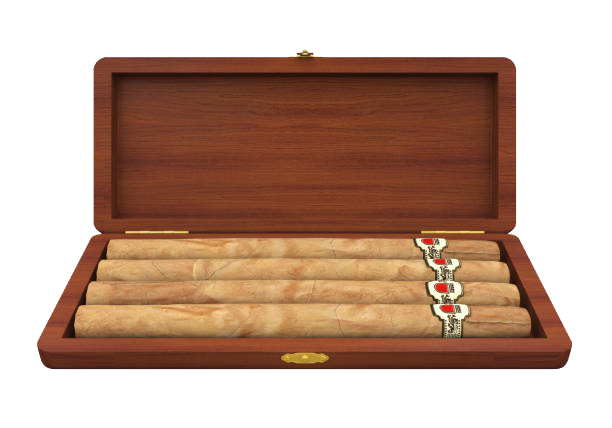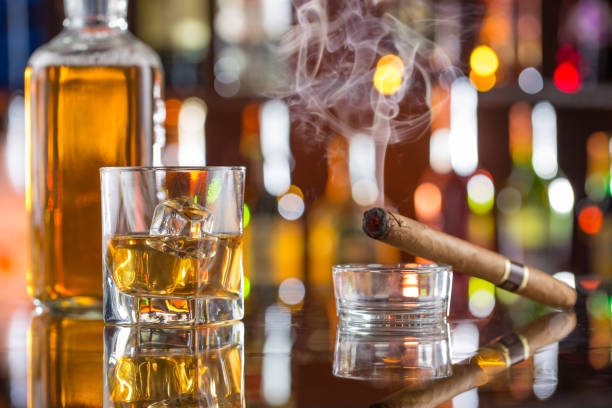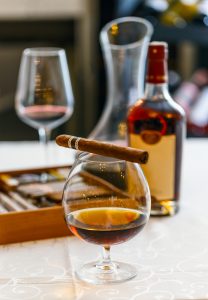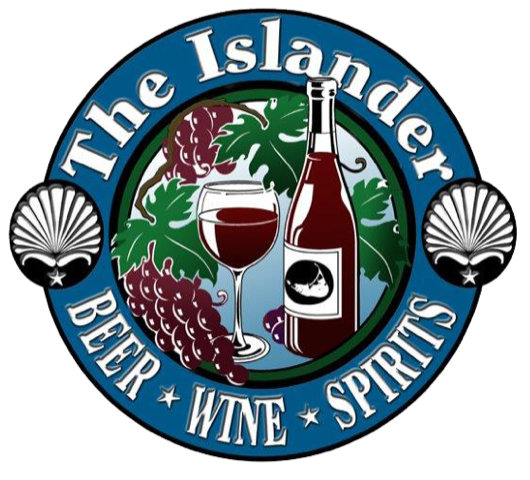The Islander is proud to be your destination for fine, hand-rolled cigars. We are honored and privileged to be offering such a wonderful selection of the most sought after cigars and accessories. So whatever brings you in – the beach, the golf course or just the front porch, we will be delighted to help you with your purchase and make your shopping experience an unforgettable one.
- Arturo Fuente
- Coheba
- Ashton
- Monte Cristo
- Padron
- Avo
- Griffin’s
- and many more.


Complete Cigar Guide

Shapes, Sizes and Shades, making sense of them all.
Why do some things have to be so difficult? I mean, isn’t it hard enough that there are thousands of different cigars available. Now they have to throw in things like sizes, colors, shapes, etc. Believe me, this stuff wasn’t created to confuse you, it just adds to the breadth and depth of what is available for you to enjoy. Like any hobby, you can start off doing things the easy way, then you can get more advanced the better you understand what is available.
Size
The size of a cigar, in name, is a nearly meaningless designation, the reason being that the size of a cigar, when determined by a name such as corona or robusto, is not a universal standard. In other words, one company’s corona is another company’s churchill even though both measure the exact same length and ring gauge. Once you understand this, most of the confusion regarding cigar size disappears.
There are, however, “classic” measurements for cigars that most cigar makers attempt to follow, But remember, just because a cigar is 7 inches in length with a 48 ring gauge doesn’t necessarily mean that the manufacturer will designate that cigar as a churchill. All you really have to know is that cigars are categorized by length and ring gauge which is a fraction of an inch measured in 64ths. A cigar with a 52 ring gauge, for example, measures 52/64ths of an inch in diameter.
Go with the cigar you feel most comfortable holding. A 50- or 52-ring gauge cigar should offer the best balance of comfort, taste, and draw, but ultimately it’s a question of personal style. As a rule of thumb, a larger ring gauge will generally give a fuller draw than a slimmer gauge. Large and unique shapes are harder to roll properly, therefore only the most experienced rollers are allowed to make them. Also, the larger shapes are more prone to construction flaws than the more easily rolled shapes. Most handmade cigar shapes can be put into two groups. Straight shapes are referred to as “parejos” and irregular shapes known as “figurados”. Cigarillos, dry-cured, and most any other cigar with a ring gauge of 34 or less are referred to as generically as “small cigars”.
Shape
As you have probably already figured out, cigars come in all sorts of shapes. The irregular shapes, or figurados, cover all out of the ordinary shaped cigars.
Diademas: This huge cigar, which measures 8 inches or longer has both of its ends closed. The ring gauge increases towards the foot.
Pyramid: This 6″ cigar with a 40/52 ring gauge has a tapered head with an open foot.
Culebra: 3 panatelas braided together as one cigar which is smoked separately. This cigar measures 5″ with a 38 ring gauge.
Belicoso: This cigar usually measures 5″ with a ring gauge of 50 and has arounded head rather than a point.
Perfecto: This cigar usually has a bulge in the middle and is closed on both ends.
Torpedo: A shape with a pointed head, a closed foot and a bulge in the middle.
And now the more common straight shaped cigars, or Parejos:
Panatela: (7x 38) or smaller, “pencils”.
Corona: (6 x 43) – A standard which manufacturers measure other cigars.
Lonsdale: (6 3/4 x 42) – Said to be the easiest shape to roll.
Toro: (6/1/2 x 48) – Delivers a full draw, in a medium length.
Churchill: (7 x 47) – Larger sizes in general are referred to as Churchill sizes. However, this size categorization is very loose. For example the H. Upmann Churchill is much smaller than what most companies refer to as a Churchill size.
Double Corona: (7 1/2 x 49) – Larger variation of a Churchill.
Robusto: (5 x 50) – Full draw in a shorter cigar provides a rich in a less time-intensive smoke. I suggest you start with a straight shaped cigar for your first few smoking experiences and leave the irregulars for a time when you want something a bit different. I would say the Corona and the Churchill are the most popular sizes of cigars and a good cigar size for the new smoker.
Shade
As if the size and shape weren’t enough to make your head spin, let’s throw in the shade or color of the wrapper. There are six grades of wrappers commonly used today. Double Claro – . A green shade of wrapper also known as “Candela” and sometimes referred to as “American Market Selection ” or “AMS”. This shade of wrapper is not as fully fermented as the darker shades. A heat curing process fixes the chlorophyll in the leaf and results in a somewhat grassy sweetness. It is generally a little harsher than a more thoroughly fermented and aged, darker wrapper. This shade is not common in premium handmade cigars, however, it is used on many of the inexpensive American machine-made cigars.
Claro: A very light tan colored wrapper that is somewhat neutral in flavor. Much milder than a Double Claro wrapper. This grade is usually of the shade-grown varieties.
Colorado Claro: Golden brown to medium brown in color. Some companies refer to shades in this range as “English Market Selection” or “Natural”. This is the most common grade among today’s premium cigars. Most of this grade is from sun-grown varieties.
Colorado: Reddish brown wrapper that is medium to rich flavor and has a subtle aroma. Usually it is from the shade-grown varieties.
Colorado Maduro: Dark brown in color, rich in flavor, this shade of wrapper is also from shade-grown varieties.
Maduro: From the Spanish word meaning ripe, this very dark brown leaf is the last to be harvested, is fermented longer and to allowed to reach higher temperatures during fermentation than the other grades of wrapper leaf. Sometimes, this darker color is produced by a “cooking” process. Often the resulting leaf can be rich in flavor and have a slightly sweet, roasted flavored. Oscuro, a.k.a. “Double Maduro”, is an almost black variation of the this grade. But again, don’t let all of this confuse you too much. Start slowly and you will eventually start to learn all the varieties available for your smoking pleasure.
Chaveta: The knife used in a cigar factory for cutting the wrapper leaf.
Churchill: A large corona format cigar, usually 7 inches long with a 48 ring gauge named after Winston Churchill who liked large cigars.
Corona: A traditionally-proportioned cigar measuring 5 1/2 to 6 inches by 42 to 44 ring gauge.
Corona Gorda: A long robusto format 5 1/2 inches with a 46 ring gauge.
Culebra: An exotic cigar consisting of three panatelas that are braided together to form one cigar.
Curing: The process of removing moisture from freshly harvested tobacco.
Cut Filler: Filler tobacco consisting of chopped pieces most common in machine-made cigars.
Cutter: A device for clipping the end off a cigar. Some resemble scissors with curved blades; others look like small guillotines for making a straight or V-shaped notch. In addition one variety looks like a .44 magnum bullet and another a fountain pen, they pull apart to reveal a punch that cuts a round hole in the end of the cigar.
Demitasse: A small cigar around 4 inches by a 30 ring gauge.
Double Corona: Cigar with dimensions of 7 1/2 to 8 inches by a large gauge of 49 to 52.
Draw: The flow of smoke from a cigar. It can be too easy (hot) or too tight (plugged)
Filler: The tobacco that makes up the center of the cigar. There are two main types of filler, short and long.
Figurado: A Spanish term that refers to cigars with exotic sizes, such as torpedoes, pyramids, perfectos and culebras.
Flag: An alternative to a cap. The flag method of finishing a cigar involves shaping the wrapper leaf at the head of the cigar so that it secures the wrapper. Sometimes, it is tied off in a pigtail or curly head.
Foot: Also called the “tuck,” it’s the part of the cigar that is lit.
Galera: The room in which cigars are rolled at the factory.
Gum: A vegetable adhesive used to secure the head of the wrapper leaf around the finished bunch.
Hand: Individual leaves of tobacco that are hung together after harvest and tied at the top. These hands are piled together to make a bulk for fermentation.
Handmade: A cigar that is bunched, bound and wrapped entirely by hand.
Hand-rolled: A cigar made entirely by hand with high quality wrapper and long filler.
Head: The end of the cigar that is placed in the mouth.
Hot: A cigar which has a quick, loose draw. This is caused by the cigar being under filled. It is usually accompanied by harsh flavors.
Humidor: A box (but actually an environment) used to store or age cigars. Like a wine cellar, the box is fitted with devices to control temperature and humidity. The ideal environment should be 70°F and 70% relative humidity.
Ligero: One of three types of filler tobacco. This aromatic tobacco adds body to a cigar blend. Ligero means light in Spanish.
Long Filler: Whole leaves selected and rolled by hand to create a looser and easier draw of smoke.
Lonsdale: A cigar typically 6 1/4 inches by a 42 or 44 ring gauge.
Machine Made: Cigars made entirely by machine. Heavier weight binders and wrappers are generally used and cut filler is used in place of long filler.
Mold: The device used in making cigars that gives shape to a finished bunch. Also, a fungi, which is potentially damaging, that forms on cigars when they are stored at too high a temperature.
Oleoresins: Oils and resins found in tobacco that give it its smoking qualities.
Panatela: A widely-varying cigar format ranging from 5 to 7 inches with a gauge from 34 to 38
Perfecto: A cigar with a rounded head and a closed foot.
Petit Corona: A short corona format usually 4 1/2 inches by a 40 ring gauge.
Plug: A tight spot in a cigar that prevents a proper draw.
Premium Cigar: A high grade cigar made by hand from 100% tobacco long leaf filler.
Puro: A cigar whose filler, binder and wrapper come from the same country.
Pyramid: A cigar with an open foot and a tapered head.
Ring Gauge: The diameter of a cigar is referred to as the ring gauge. It is a measurement equal to 1/64 of an inch. A 64 ring gauge would be one inch in thickness and a 32 ring gauge would be 1/2 inch thick.
Robusto: A short churchill format typically 5 to 5 1/2 inches by a ring gauge of 50.
Roller: Highly skilled artisans who apply the wrapper to the bunch.
Seco: Spanish meaning “dry”. This filler contributes aroma and is of medium-body.
Shade Grown: Tobacco, usually the wrapper leaf of a cigar. For mildness, the wrapper is grown under tents and is not exposed to sunlight.
Shade Leaf: Tobacco grown under a canopy or tent producing a thinner, more elastic leaf used in the wrapper.
Short Filler: Chopped scraps of leaves hand-rolled, but more likely machine-rolled, to create a tight hard draw of smoke.
Smoking Time: A 5-inch cigar with a 50 ring gauge, such as a robusto, should provide anywhere from 20 to 30 minutes of smoking pleasure. A double corona, a 7 1/2-inch cigar with a 50 ring gauge, may give over an hour’s worth of smoking time. A thinner cigar, such as a longsdale, smokes in less time than a cigar with a 50 ring gauge.
Sun Grown: Tobacco which is grown in direct sunlight. This creates thicker veins and a thicker leaf.
Tooth: Small bumps which texture the wrapper on a cigar.
Torcedor: Title earned by the master cigar rollers.
Torpedo: A cigar with a closed head and a closed foot.
Tubo: A cigar that is placed in a tube. Most tubes are aluminum while some are glass.
Veined: The rib of the tobacco leaf. A quality cigar should not be too veined.
Volado: A type of filler tobacco chosen for its burning qualities.
Wrapper: The outermost tobacco leaf of the cigar.
Open year round, 7 days a week. Monday-Saturday 9am-9pm, Sunday 10am-9pm.
15 Old South Road, Nantucket, MA

